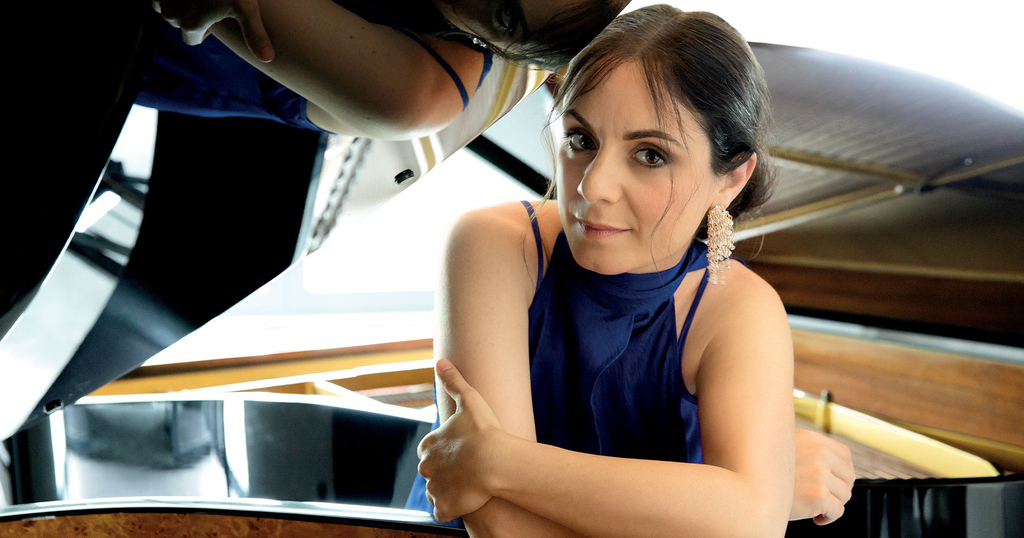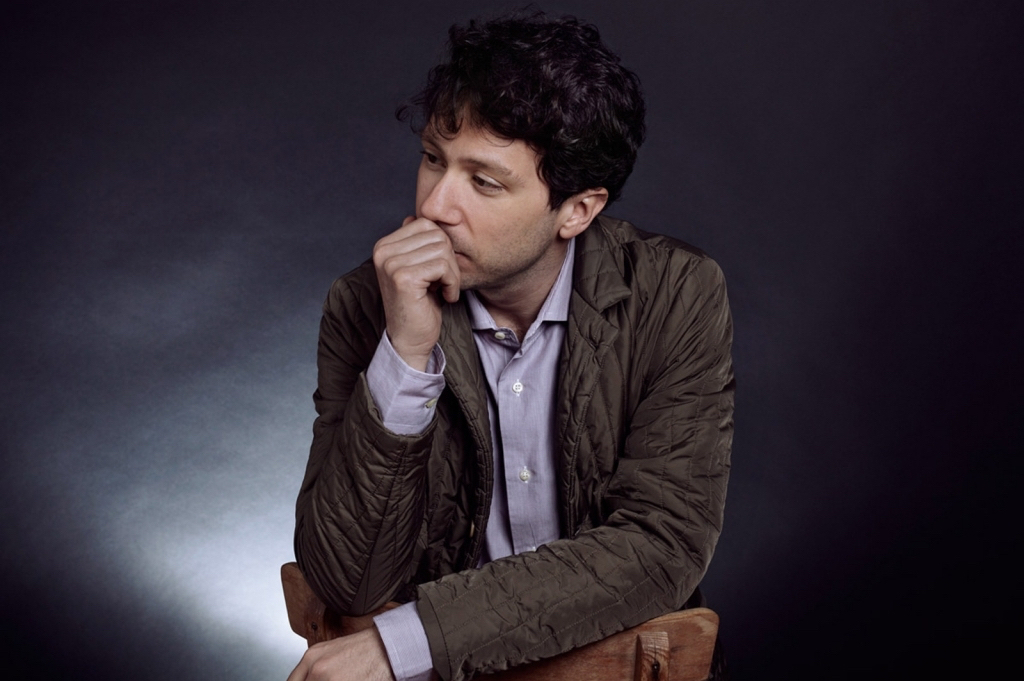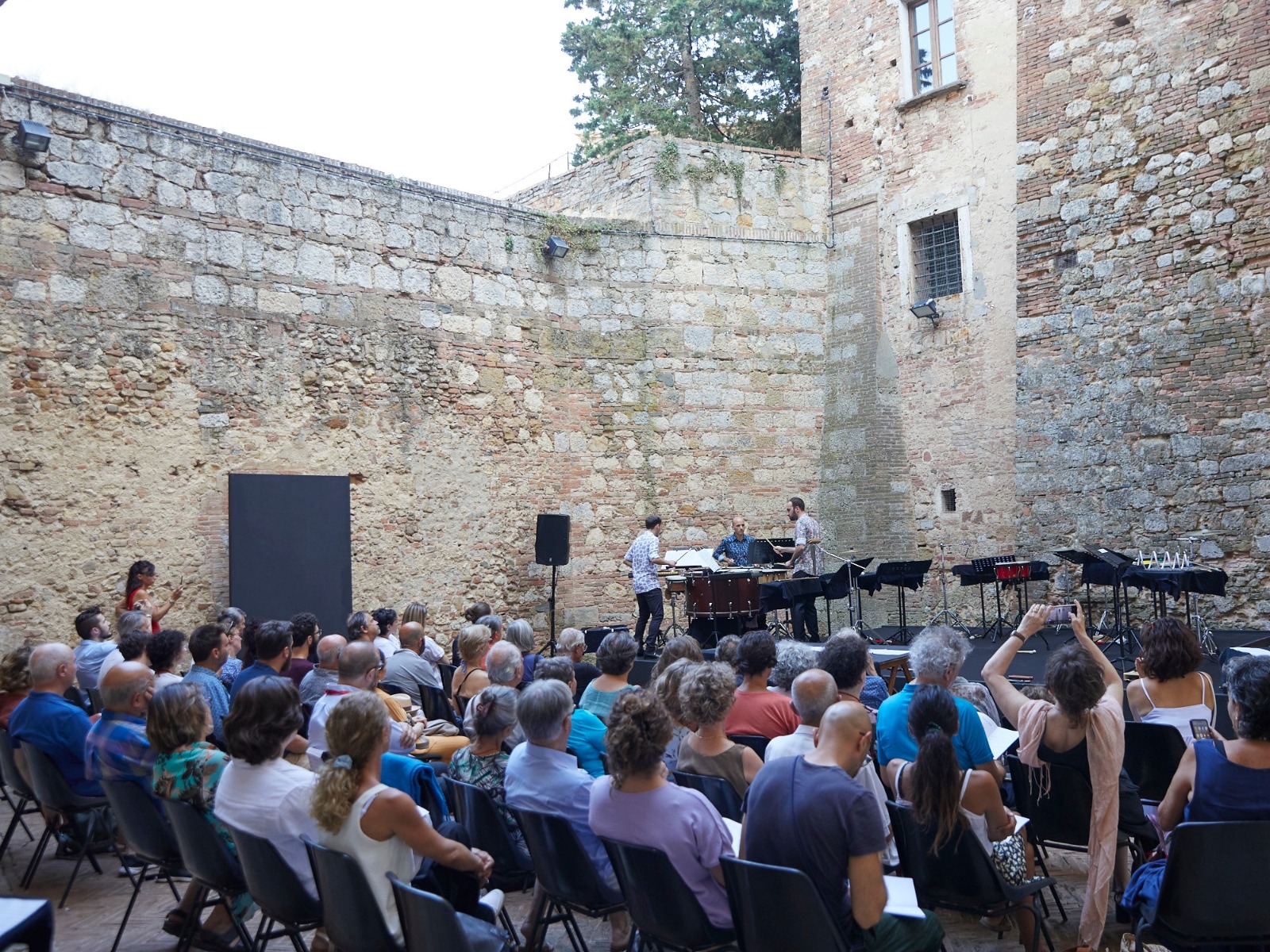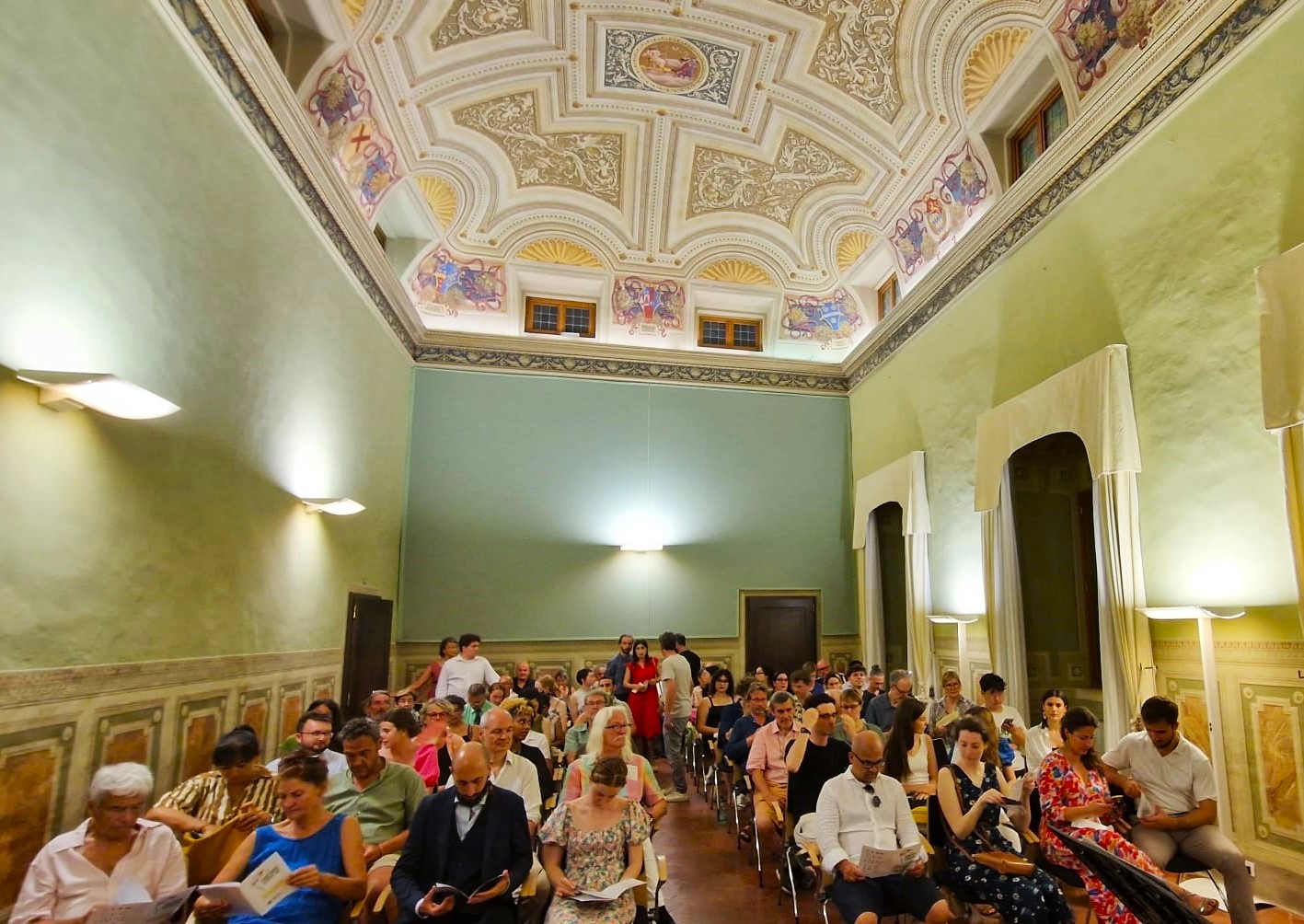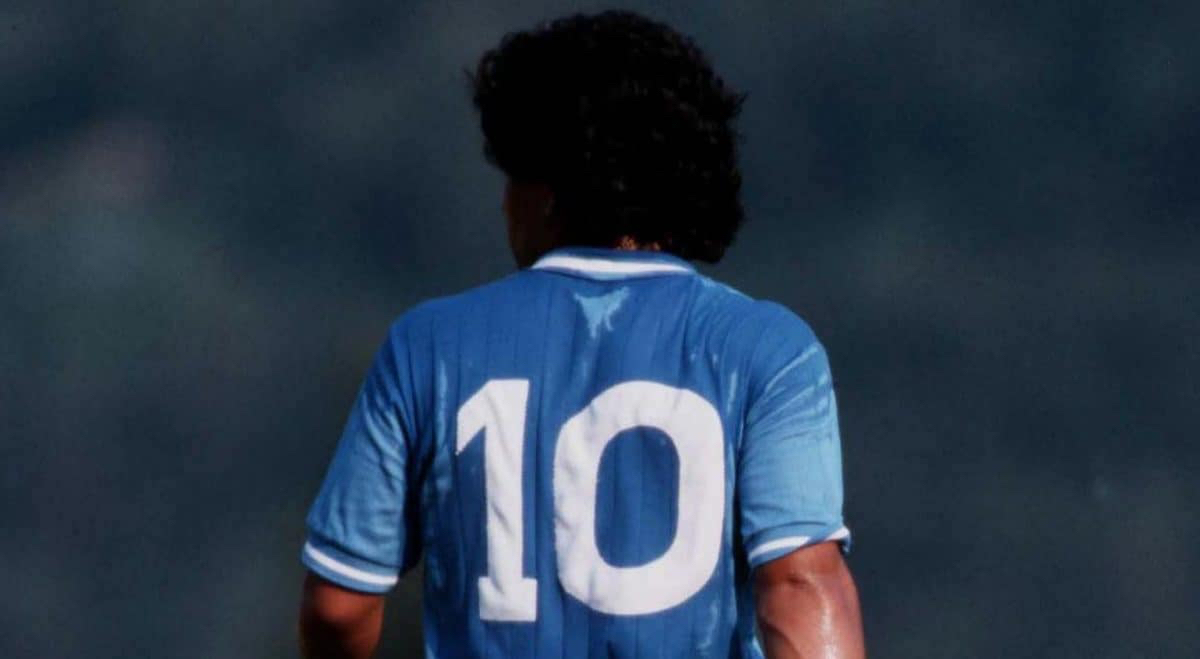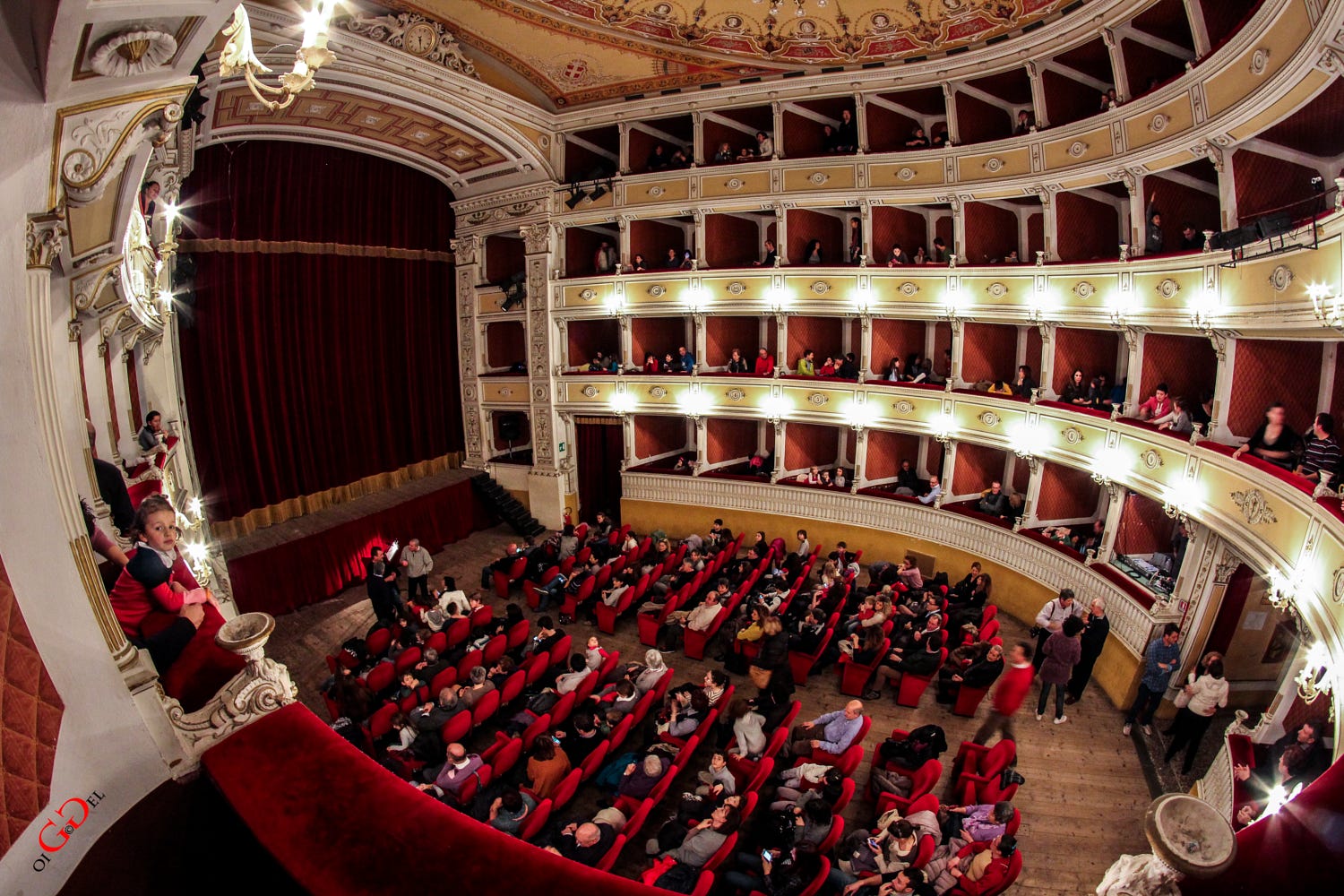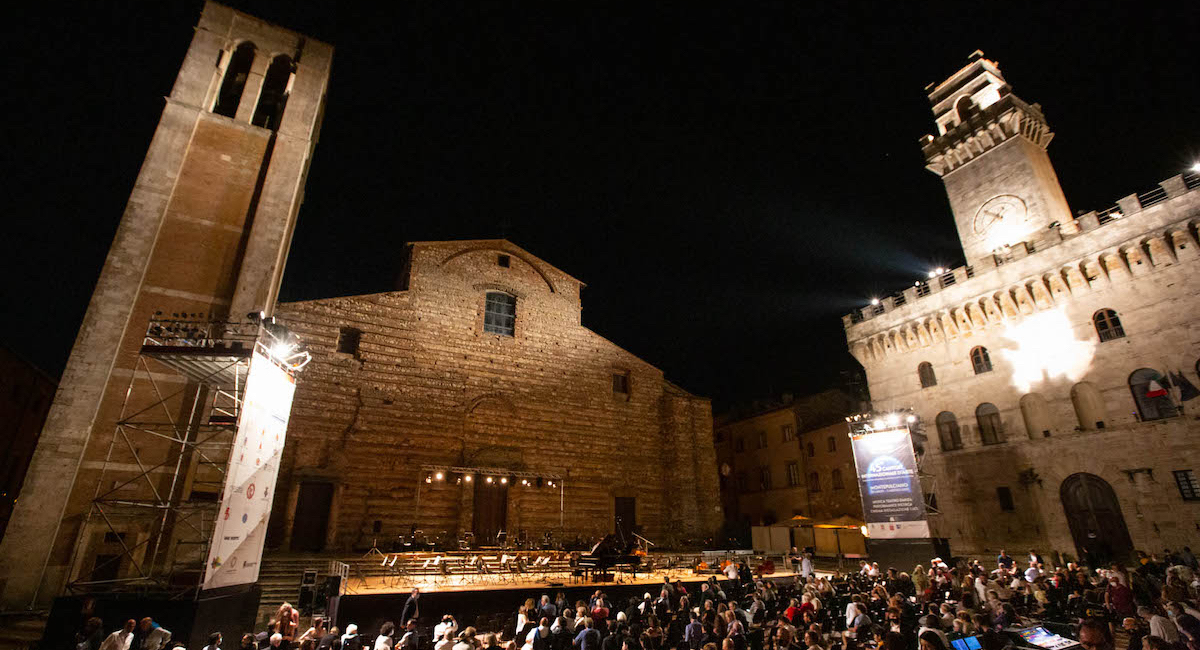MOMENTI D'ORGANO II
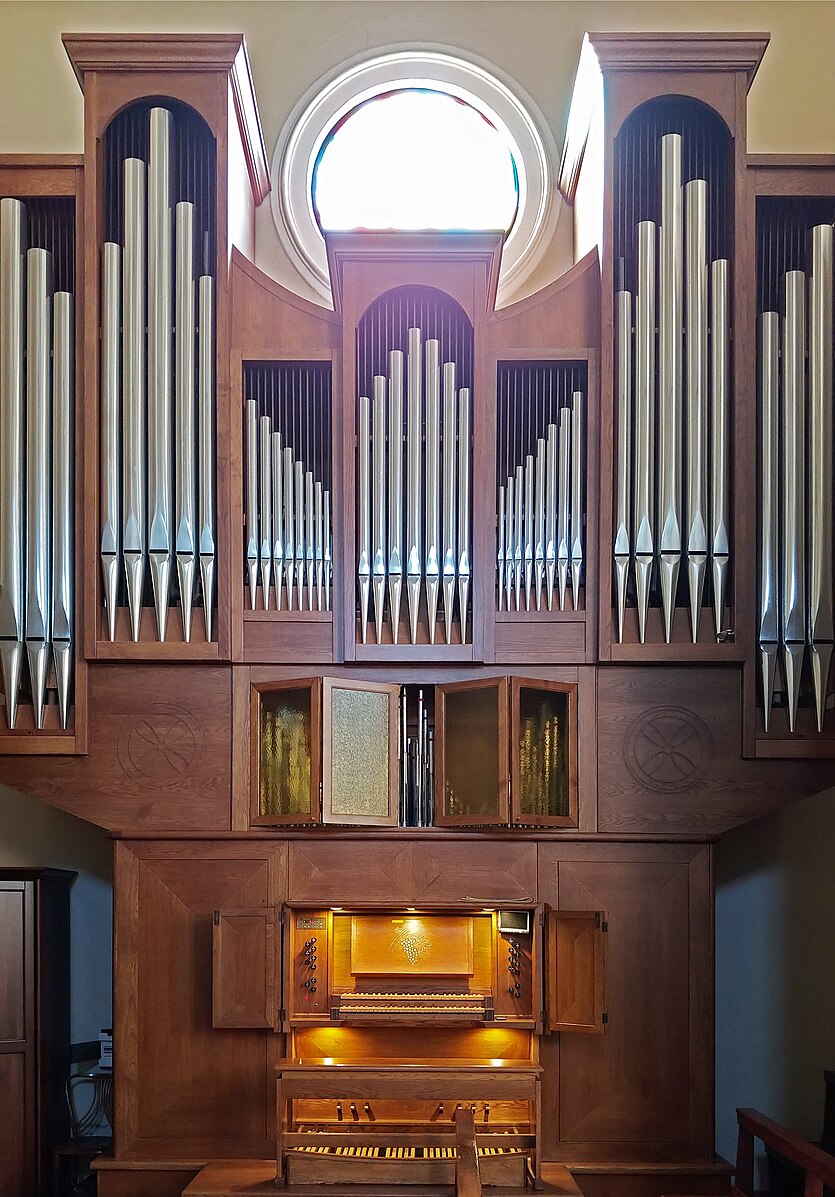
Pasquale Bonfitto
Nicola Pontara
organo
Chiesa del Sacro Cuore di Gesù
DOMENICA 21 LUGLIO
Ore 12
Johann Sebastian Bach
(1685-1750)
Preludio e fuga in mi bemolle maggiore BWV 552
Felix Mendelssohn-Bartholdy
(1809-1847)
Sonata op. 65 n. 3
Con moto maestoso
Andante tranquillo
Simon Stampfer
(1999)
Was bisher gescah
(prima assoluta, commissione 49º Cantiere)
François Couperin
(1668-1733)
Offertoire sur Les Grands Jeux (Messe pour les Counvents)
Alexandre Guilmant
(1837 – 1911)
Finale dalla Prima Sonata op. 42
In collaborazione con
Conservatorio "C. Monteverdi" Bolzano

Was bisher geschah
Il brano "Was bisher geschah" ("Cos'è successo fino ad ora") è un tentativo di elaborare in una sintesi tutte le tecniche compositive che si sono succedute nel tempo, in maniera cronologica in un unico brano organistico.
Was bisher geschah
The piece "Was bisher geschah" ("What has happened until now") is an attempt to synthesize all the compositional techniques that have occurred over time, in a chronological manner in a single organ piece.
Il Preludio e fuga in mi bemolle maggiore BWV 552 di Johann Sebastian Bach fu composto a Lipsia intorno al 1739 e fa parte, insieme ad altre 26 composizioni, del terzo volume della raccolta di brani d’organo Clavier - Übung. Il Preludio apre la raccolta mentre la Fuga la chiude, ma in sede concertistica i due brani vengono eseguiti uno di seguito all’altro.
Il Preludio si presenta in forma di Ouverture, con una struttura ciclica in cui si susseguono tre idee tematiche. La Fuga è divisa in tre parti, ognuna delle quali è costruita con un motivo melodico e ritmico differente. Il ritorno del numero tre sia nell’impostazione tematica che in altri elementi legati alla composizione ha fatto spesso pensare agli studiosi di trovarsi alla presenza di una simbologia trinitaria nascosta dietro la composizione del brano.
La Sonata Op. 65 n. 2 di Felix Mendelssohn-Bartoldy fa parte delle Sei Sonate per organo op. 65, commissionate dagli editori inglesi Covenrty e Hollier, composte tra il 1844 e il 1845 e pubblicate il 15 settembre dello stesso anno. Sono considerate l’apice della produzione organistica di Mendelssohn, ritenuto il fondatore della sonata romantica per organo. Le sonate op. 65 effettivamente non seguono la forma classica della sonata, ma si basano su un accostamento di diversi temi e pezzi caratteristici senza un’effettiva relazione interna. Si ritiene che l’introduzione della terza sonata sia la rielaborazione di un pezzo che Mendelssohn aveva scritto per le nozze della sorella Fanny nel 1829.
L’Offertoire sur Les Grands Jeux di François Couperin è tratto dalla Messe pour les Convents, contenuta a sua volta nella raccolta Pieces d’Orgue pubblicata nel 1690. Le messe d’organo di Couperin sono una raccolta di brevi interludi organistici che si alternano al canto gregoriano durante la celebrazione della messa. Il Grand Jeu a cui fa riferimento il titolo dell’offertorio invece è una combinazione di fondi, ance e cornetti tipica dell’organo classico francese.
L’offertorio della Messe pour les Couvents è diviso in tre sezioni distinte, una prima vivace in sol maggiore, per passare poi ad una sezione centrale contrastante in sol minore per tornare poi in sol maggiore nella terza e ultima sezione
Alexandre Guilmant è considerato uno dei maggiori esponenti della scuola organistica francese della seconda metà dell’Ottocento. Compositore oltre che organista, tra il 1874 e il 1906 scrive 8 Sonate per organo e altri pezzi minori. Le sue sonate sono ritenute alcuni tra i capolavori della letteratura organistica romantica francese. Risentono dell’influenza delle grandi opere organistiche che le hanno precedute, prime fra tutte le opere di Cèsar Franck, ma anche dello stile e del linguaggio sinfonico di compositori come Bruckner e Mahler. La prima sonata op. 42 in re minore, di cui oggi ascoltiamo il movimento finale, l’Allegro assai, è stata scritta dall’autore anche in una versione per organo e orchestra che l’autore stesso denominò “Premiére Symphonie”. (Myriam Bizzarri)
The Prelude and Fugue in E flat major BWV 552 by Johann Sebastian Bach was composed in Leipzig around 1739 and is part, together with 26 other compositions, of the third volume of the collection of organ pieces Clavier - Übung. The Prelude opens the collection while the Fugue closes it, but in concert the two pieces are performed one after the other. The Prelude is presented in the form of an Overture, with a cyclical structure in which three thematic ideas follow one another. The Fugue is divided into three parts, each of which is constructed with a different melodic and rhythmic motif. The return of the number three both in the thematic setting and in other elements linked to the composition has often made scholars think of finding themselves in the presence of a Trinitarian symbolism hidden behind the composition of the piece.
The Sonata op. 65 no. 2 by Felix Mendelssohn-Bartoldy is part of the Six Organ Sonatas op. 65, commissioned by the English publishers Covenrty and Hollier, composed betwee n 1844 and 1845 and published on 15 September of the same year. They are considered the pinnacle of organ music produced by Mendelssohn, considered the founder of the Romantic organ sonata. The sonatas op. 65 actually do not follow the classical sonata form, but are based on a juxtaposition of different themes and characteristic pieces without an actual internal relationship. The introduction to the third sonata is believed to be a reworking of a piece that Mendelssohn had written for his sister Fanny's wedding in 1829.
L'Offertoire sur Les Grands Jeux by François Couperin is taken from the Messe pour les Couvents, contained in turn in the collection Pieces d'Orgue published in 1690. Couperin's organ masses are a collection of short organ interludes that alternate with Gregorian chant during the celebration of mass. The Grand Jeu to which the title of the offertory refers, however, is a combination of bottoms, reeds and horns typical of the classical French organ.
The offertory of the Messe pour les Couvents is divided into three distinct sections, a first lively one in G major, then moving on to a contrasting central section in G minor and then returning to G major in the third and final section
Alexandre Guilmant is considered one of the greatest exponents of the French organ school of the second half of the nineteenth century. Composer as well as organist, between 1874 and 1906 he wrote 8 organ sonatas and other minor pieces. His sonatas are considered some of the masterpieces of French romantic organ music. They are influenced by the great organ works that preceded them, first and foremost the works of Cèsar Franck, but also by the style and symphonic language of composers such as Bruckner and Mahler. The first sonata op. 42 in D minor, of which today we listen to the final movement, the Allegro assai, was also written by the author in a version for organ and orchestra which the author himself called “Premiére Symphonie”.
 Sostieni i progetti
Sostieni i progetti Amministrazione Trasparente
Amministrazione Trasparente Contatti
Contatti
